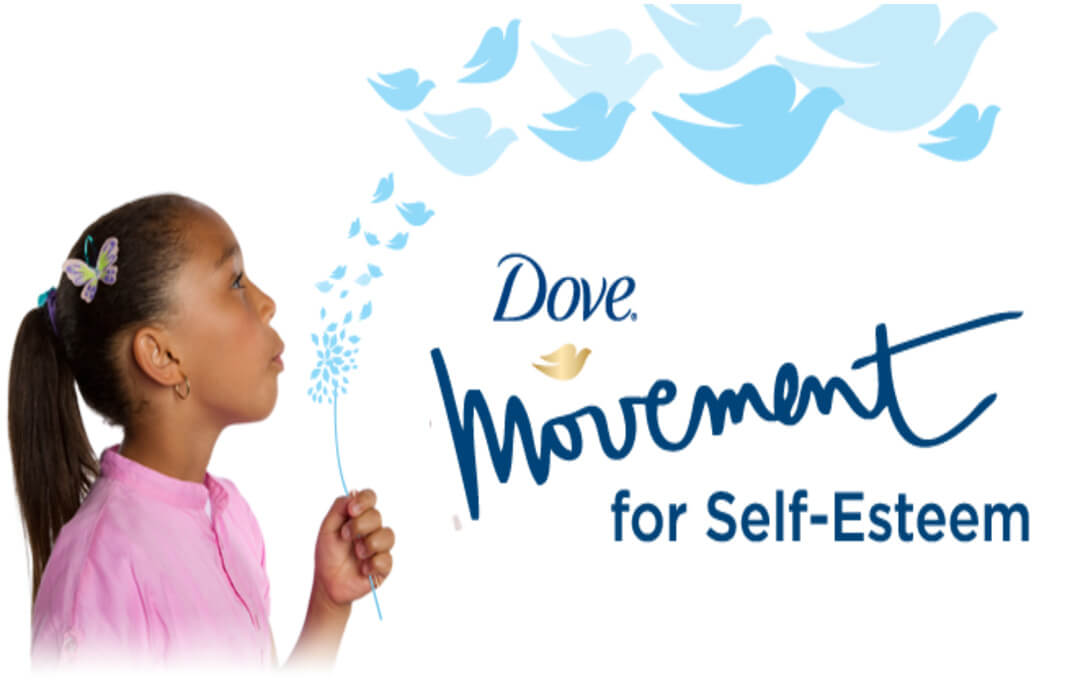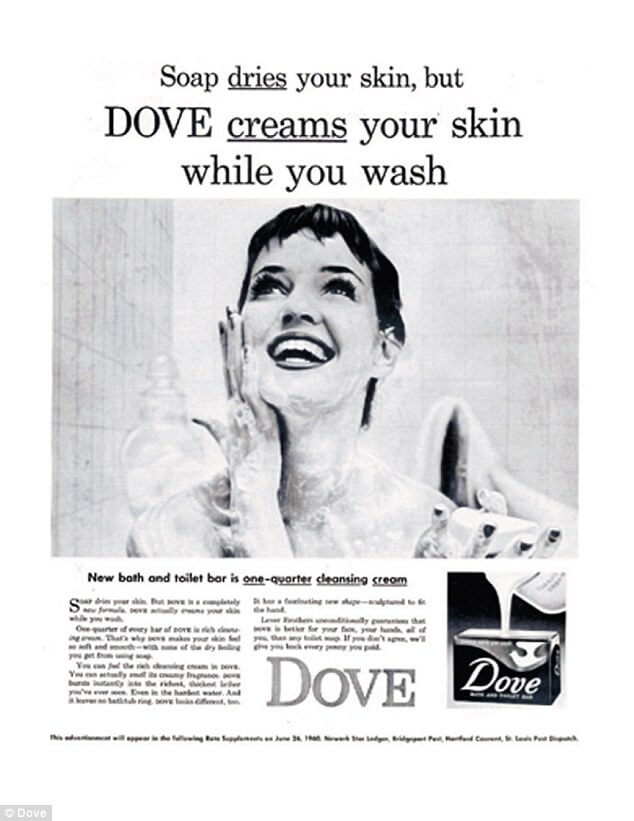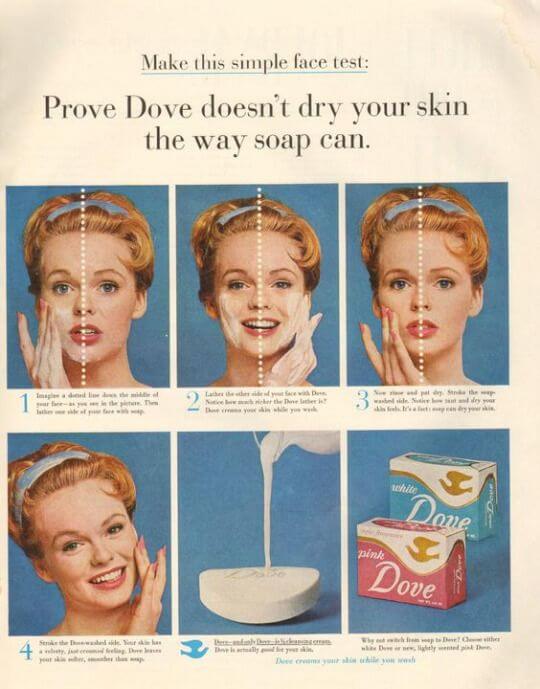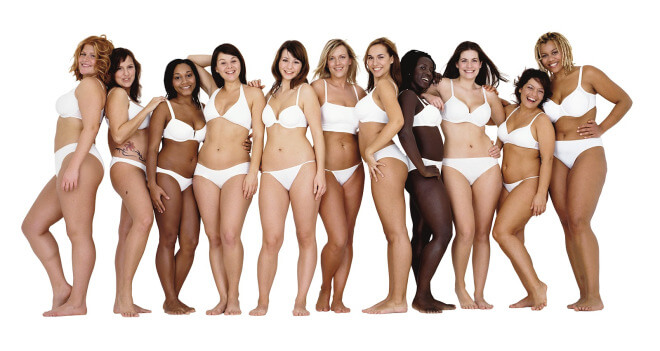In the last 40 years, Dove has grown from being a product to a personal care brand. It has been able to build loyalty among its customers and has stood apart from hundreds of other personal care products. What has made it possible and what can other brands learn from Dove’s marketing campaigns? Let’s dive deep and know more.

Dove was created in 1957, being different from the ordinary soap, it had some functional benefits over others and Dove used those benefits to promote itself.
Here is the first Dove ad:
It says: it’s ¼ cleansing cream
Dove creams your skin while other soaps make it dry.
This is the proposition that Dove used everywhere. TV, Print, Billboards, and everywhere.

1 message across all the platforms: Dove is different from all the soaps.
And this continued for almost 40 years!
This message worked great for them, Dove became so popular that Unilever decided to create a brand around “Dove” and have more products under the name.
There were products, including soaps, shampoos, conditioners, and deodorants etc with Dove as the brand.
Now Dove was no longer a soap with moisturizing cream, it became a brand with a portfolio of products and Dove needed to build its brand. To find its USP, the team brainstormed on how can Dove be different from others and how to build a rapport among its target audience.
For this, Dove did a survey and found out the definition of beauty had become limiting and unattainable and only 2 percent of the women around the world would describe themselves as beautiful.

And this perception was something that Dove wanted to change.
It wanted to change the way society views the beauty, and wanted to provoke discussions and debate on it.
That’s how Dove started its campaign for “Real Beauty” in 2004.
The first stage of the campaign saw global billboard advertisements featuring regular women, not models:
And people were asked to vote on such questions
- Fat or Fab
- Wrinkled or wonderful
The votes were updated in real time and the response to the campaign was very positive.
The advertising generated lots of responses and got the media talking, generating media exposure which Unilever estimated to be worth more than 30 times the paid-for media space.
After that, Dove started a viral video campaign named “Daughters” which shows how mothers and daughters related to modern perception of beauty.
 Dove rolled out similar videos, ads that all talked about just one issue “perception of beauty and its impact on self esteem.”
Dove rolled out similar videos, ads that all talked about just one issue “perception of beauty and its impact on self esteem.”
Dove became somewhat the first brand to go viral on Social media, and it did not waste this opportunity. It crossed the awareness stage, it got the people talking, and it did not stop there. It went on to “walk the talk.”
Dove started “Dove Self Esteem Project” that works to increase the self esteem of the youngsters and it will have helped 40 million youngsters across the globe by 2024.
Impact on the brand:
- Tremendous word of mouth and free media: Unilever estimated the worth of the media attention more than 30 times the paid-for media space.
- Increase in sales: In only 6 months after the birth of the campaign, Dove’s market share increased by 2.3 percent, and there was 700 percent increase in the sales. And overall “The 58 campaign resulted in a 24 percent sales increase during the advertising period across the entire Dove brand” (Russell).
- Connect with it’s audience: This campaign gave the company a “higher purpose” which connects the brand directly with it’s biggest audience (women)

When asked about the images in Dove ads, 76 percent described the women in the ads as beautiful and 68 percent admitted that the ads made you think differently about the brand (Russell).
Lessons to learn for the marketers:
Try to stand apart: Don’t stand in the same queue with all your competitors. Try to find what makes you different. When it started, it was different from all other soaps, and that helped it grow. But when Dove became a master-brand, it lost that plus point and for its products to compete with other products, it needed something different and it’s “point of view” just did that.
2. Walk the talk: Be real, don’t just say things, but back them up with the actions. Like Dove did with “self esteem fund”. It helped Dove build credibility.
3. Be consistent with your message everywhere: It’s important to stick to one message. A brand talking about everything is not talking about anything at all. Don’t try to be everything for everyone. Just be one and be that everywhere. Be symmetric across your product line, your social profiles, your website, print ads, your office, your press releases and everywhere.For example: Dove only launched products of personal care, no beauty products, just to be consistent with its branding.
4. Keep your target audience in mind and see what is important for them: Every business is different and its target audience is different as well. Something that worked for Dove might not work for, let’s say Axe. So it is important to know your audience and your marketing efforts should make sense only to them and not to everyone.
5. Involve your customers: With the campaigns asking the customers to vote, conducting workshops for them involved the customers and helped make the customers feel connected with the company.
Marketers should take inspiration from Dove, that followed one message on all social channels and strategized the prevailing internet marketing trends together to promote its brand among the audience, create credibility, and boost its sales manifold. If Dove could monetize simple ideas to bring its business to new heights, you can too!
Rahul Vij, Co-founder of WebSpero Solutions, theater enthusiast; loves to talk about Digital Marketing and other emerging technologies. He believes in learning mindset and is always looking to learn something new.